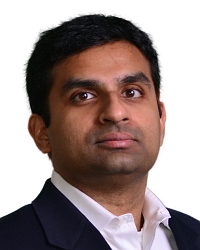TR2014-078
Learning to Rank 3D Features
-
- , "Learning to Rank 3D Features", European Conference on Computer Vision (ECCV), DOI: 10.1007/978-3-319-10590-1_34, September 2014, vol. 8689, pp. 520-535.BibTeX TR2014-078 PDF
- @inproceedings{Tuzel2014sep,
- author = {Tuzel, O. and Liu, M.-Y. and Taguchi, Y. and Raghunathan, A.U.},
- title = {{Learning to Rank 3D Features}},
- booktitle = {European Conference on Computer Vision (ECCV)},
- journal = {European Conference on Computer Vision (ECCV)},
- year = 2014,
- volume = 8689,
- series = {Lecture Notes in Computer Science},
- pages = {520--535},
- month = sep,
- doi = {10.1007/978-3-319-10590-1_34},
- issn = {0302-9743},
- isbn = {978-3-319-10589-5},
- url = {https://www.merl.com/publications/TR2014-078}
- }
- , "Learning to Rank 3D Features", European Conference on Computer Vision (ECCV), DOI: 10.1007/978-3-319-10590-1_34, September 2014, vol. 8689, pp. 520-535.
-
MERL Contact:
-
Research Areas:
Abstract:
Representation of three dimensional objects using a set of oriented point pair features has been shown to be effective for object recognition and pose estimation. Combined with an efficient voting scheme on a generalized Hough space, existing approaches achieve good recognition accuracy and fast operation. However, the performance of these approaches degrades when the objects are (self-)similar or exhibit degeneracies, such as large planar surfaces which are very common in both man made and natural shapes, or due to heavy object and background clutter. We propose a max-margin learning framework to identify discriminative features on the surface of three dimensional objects. Our algorithm selects and ranks features according to their importance for the specified task, which leads to improved accuracy and reduced computational cost. In addition, we analyze various grouping and optimization strategies to learn the discriminative pair features. We present extensive synthetic and real experiments demonstrating the improved results.
Related News & Events
-
NEWS MERL researcher, Oncel Tuzel, gives keynote talk at 2016 International Symposium on Visual Computing Date: December 14, 2015 - December 16, 2015
Where: Las Vegas, NV, USA
Research Area: Machine LearningBrief- MERL researcher, Oncel Tuzel, gave a keynote talk at 2016 International Symposium on Visual Computing in Las Vegas, Dec. 16, 2015. The talk was titled: "Machine vision for robotic bin-picking: Sensors and algorithms" and reviewed MERL's research in the application of 2D and 3D sensing and machine learning to the problem of general pose estimation.
The talk abstract was: For over four years, at MERL, we have worked on the robot "bin-picking" problem: using a 2D or 3D camera to look into a bin of parts and determine the pose, 3D rotation and translation, of a good candidate to pick up. We have solved the problem several different ways with several different sensors. I will briefly describe the sensors and the algorithms. In the first half of the talk, I will describe the Multi-Flash camera, a 2D camera with 8 flashes, and explain how this inexpensive camera design is used to extract robust geometric features, depth edges and specular edges, from the parts in a cluttered bin. I will present two pose estimation algorithms, (1) Fast directional chamfer matching--a sub-linear time line matching algorithm and (2) specular line reconstruction, for fast and robust pose estimation of parts with different surface characteristics. In the second half of the talk, I will present a voting-based pose estimation algorithm applicable to 3D sensors. We represent three-dimensional objects using a set of oriented point pair features: surface points with normals and boundary points with directions. I will describe a max-margin learning framework to identify discriminative features on the surface of the objects. The algorithm selects and ranks features according to their importance for the specified task which leads to improved accuracy and reduced computational cost.
- MERL researcher, Oncel Tuzel, gave a keynote talk at 2016 International Symposium on Visual Computing in Las Vegas, Dec. 16, 2015. The talk was titled: "Machine vision for robotic bin-picking: Sensors and algorithms" and reviewed MERL's research in the application of 2D and 3D sensing and machine learning to the problem of general pose estimation.
